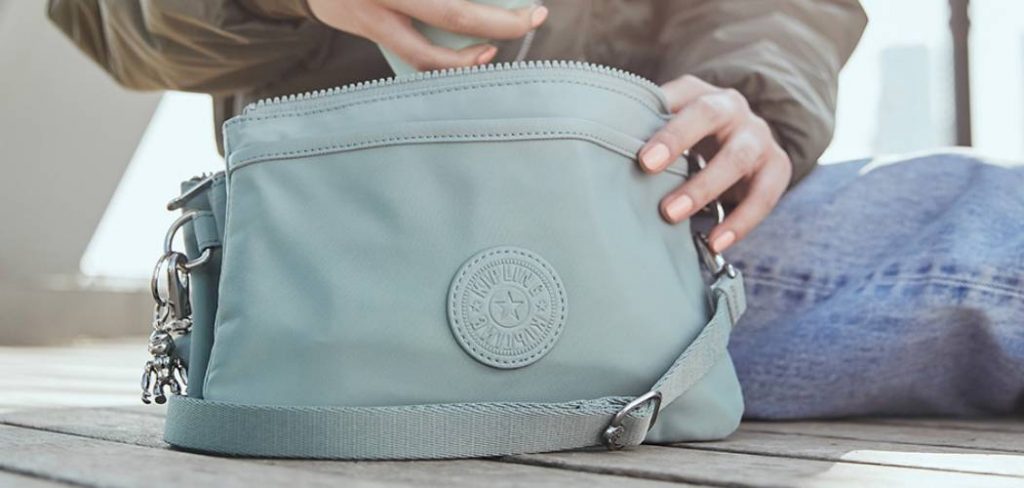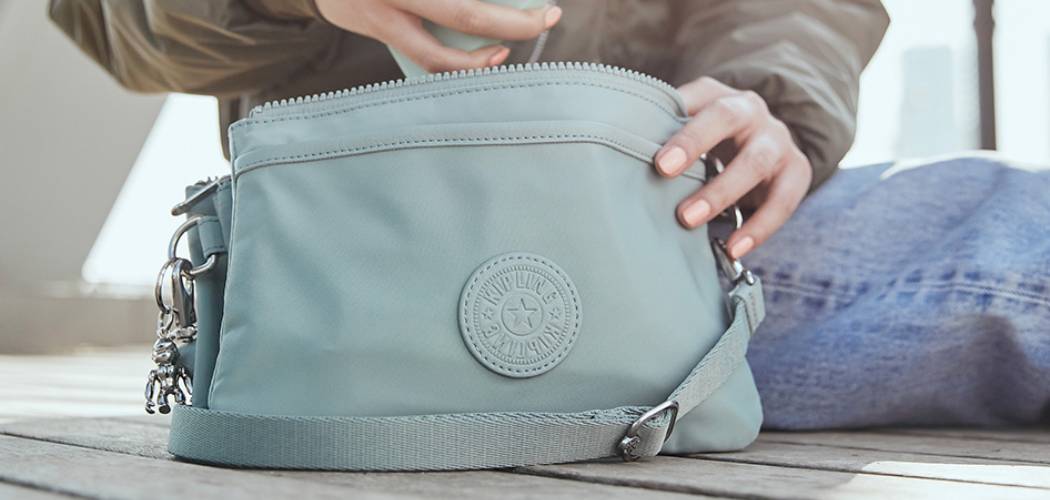Are you the proud owner of a Kipling bag but need help with how to maintain it properly? Don’t worry because we’re here to help! Washing and caring for your Kipling bags is easy – all you need is knowledge and the right materials.

In this blog post, we outline simple instructions on how to wash a Kipling bag safely so that you can enjoy its long-lasting style for years to come.
From what kind of cleaning detergents are best suited for each material type to tips on keeping your Kipling bags clean as often as possible – by following these guidelines, your beloved companion will stay looking its very best! So, let’s get started learning all about washing a Kipling bag together!
What Will You Need?
Before we dive into the washing instructions, let’s ensure you have all the necessary materials.
- Mild Detergent: It is important to use a mild detergent that won’t damage the fabric or color of your bag. Avoid using harsh chemicals or bleach.
- Soft Bristle Brush: A soft bristle brush will be gentle on your bag while still effectively removing any dirt or stains.
- Soft Cloth: A soft cloth can gently wipe down the bag and remove surface dirt before washing.
- Sink or Basin: This will soak and rinse your bag.
- Water: You will need water for both soaking and rinsing.
Once you have gathered all the materials, we can move on to the next step – preparing your bag for washing.
10 Easy Steps on How to Wash a Kipling Bag
Step 1. Empty Your Bag:

Before you start washing your Kipling bag, ensure it’s empty. Check every pocket and every corner, and remove all items. Additionally, remove any detachable parts, such as straps or keychains.
Step 2. Pre-Cleaning:
Start with a basic surface clean to remove any loose dirt or dust from the bag. Use a soft cloth to wipe down the exterior of the bag gently. For stubborn stains or spots, use a soft bristle brush to scrub the area gently. Be sure not to scrub too hard, as it may damage the bag’s fabric. If your Kipling bag has metal parts, avoid them while scrubbing to prevent any possible tarnishing.
Step 3. Prepare the Cleaning Solution:
In a basin or sink, prepare a cleaning solution. Fill it with cool or lukewarm water and add a small amount of mild detergent. Stir the water until the detergent is fully dissolved and a soapy solution forms. Avoid using hot water as it could fade the color of your Kipling bag.
Step 4. Soak the Bag:
Next, immerse your Kipling bag in the prepared cleaning solution. Ensure the bag is fully submerged and allow it to soak for 10 to 15 minutes. This will help to loosen any dirt, grime, or stains on the bag. Remember not to soak any leather parts of the bag, as it can damage the material.
Step 5. Gentle Cleaning:
After soaking, gently clean your bag using a soft bristle brush. Start from the top and work your way down, paying particular attention to stained or dirty areas. Remember, it’s important to be gentle during this process to prevent any damage to the fabric of your Kipling bag. When brushing, move in a circular motion rather than a back-and-forth motion to avoid damaging the material.
Step 6. Rinse Thoroughly:
After gently scrubbing the entire bag, it’s time to rinse it. Drain the soapy water from the basin or sink and refill it with clean, cool water. Rinse your Kipling bag thoroughly under the running tap, ensuring no soap suds remain on the bag. Take special care to rinse out any soap from the corners or crevices of the bag.
Step 7. Drying:

Once thoroughly rinsed, gently press the bag to squeeze the excess water. However, avoid twisting or wringing the bag as it can distort its shape. Lay the bag flat on a clean, dry towel and roll it up to absorb more water. Once most of the water is absorbed, reshape the bag and allow it to air dry. Do not use a hairdryer or place the bag near a heater, as it can damage the material.
Step 8. Air Dry:
After your bag is no longer dripping wet, it’s time to let it air dry. Place it in a well-ventilated area away from direct sunlight, which can fade the colors. Ensure the bag is fully open so it dries evenly and maintains its shape. Allow the bag to completely dry naturally. This process can take several hours or even a day depending on the climate in your area.
Step 9. Final Check:
Once your bag is completely dry, give it a final inspection. Check for any remaining stains or areas that may need additional cleaning. If you spot any, repeat the cleaning process, focusing on the problematic areas.
Step 10. Enjoy Your Fresh Kipling Bag:
Congrats! Your Kipling bag is now clean and ready to accompany you on your next adventure. Regular cleaning and maintenance can extend the lifespan and keep your bag looking its best.
By following these ten simple steps, you can ensure that your Kipling bag remains in the best possible condition, preserving its functionality and style for many years to come.
5 Additional Tips and Tricks
Tip 1. Regular Maintenance:
To keep your Kipling bag looking its best, consider cleaning it regularly. A quick wipe down with a soft cloth after each use can help prevent any dirt or grime buildup.
Tip 2. Avoid Machine Washing:
While throwing your Kipling bag in the washing machine may be tempting, it is not recommended as it can damage the delicate material and cause shrinkage.
Tip 3. Always Test First:
Before applying any cleaning solution to your bag, do a patch test on a small, inconspicuous area first. This will ensure the cleaning solution does not damage or discolor the material.
Tip 4. Store Properly:

Store your Kipling bag in a cool, dry place away from direct sunlight and heat sources when not in use. This will help prevent any potential damage to the material and maintain its shape.
Tip 5. Follow Care Instructions:
Lastly, be sure to follow any care instructions provided by Kipling for your specific bag model. These instructions may vary depending on the material and design of your bag, so it’s important to read them carefully before proceeding with any cleaning methods.
With these additional tips and tricks, you can confidently keep your Kipling bag looking fresh and clean. Remember, proper care goes a long way in maintaining the quality and durability of your beloved bag.
6 Things You Should Avoid
1. Avoid Using Harsh Chemicals: Stay away from detergents and cleaners that contain bleach or other harsh chemicals. They can lead to discoloration and damage the fabric of your Kipling bag.
2. Avoid Oversoaking: While soaking can help loosen dirt and stains, over-soaking can potentially weaken the fabric. Therefore, ensure you do not leave your Kipling bag submerged in water longer than recommended.
3. Avoid Direct Sunlight: When drying your bag, avoid placing it in direct sunlight. The UV rays can cause the colors of your bag to fade and the material to degrade over time.
4. Avoid Storing in Humid Areas: Storing your Kipling bag in humid areas can lead to mold and mildew growth. Always store it in a cool, dry place to maintain its quality.
5. Avoid Heavy Load: Overloading your Kipling bag can strain and damage the straps and zippers. Ensure to carry only the necessary items to prolong the lifespan of your bag.
6. Avoid Placing in Rough Surfaces: Prolonged exposure to rough surfaces can cause scratches and tears on your Kipling bag. Always be mindful of where you place your bag to prevent any damage.
By avoiding these common mistakes, you can ensure that your Kipling bag remains clean and in good condition for a long time.
Are Kipling Bags Waterproof?

While Kipling bags are known for their durable and water-resistant material, they are not completely waterproof. They can withstand light rain or spills, but avoiding exposing them to heavy rain or submerging them in water is recommended.
If your bag gets wet, thoroughly dry it before storing it to prevent any potential damage. So, it’s always better to take precautions and protect your Kipling bag from excessive exposure to water.
Overall, knowing how to wash and care for your Kipling bag properly is essential to maintaining its quality and longevity. With regular cleaning, proper storage, and avoiding common mistakes, you can enjoy your beloved Kipling bag for many years.
Conclusion
After following these instructions to the best of your ability, your Kipling bag should look like new! Taking proper care of your bag is important to keeping it lasting. You have now taken the initiative to revive and renew your Kipling bag, ensuring it will stay in top condition for its loyal service for many more years.
Always use warm, soapy water when cleaning, allow it to air dry, and condition it frequently as needed!
With a bit of handy information and a lot of love and attention, you can easily maintain its life cycle. Whether you are strutting through the city streets or going on a faraway journey, don’t forget: give your Kipling bag regular maintenance, and it will reward you with longevity in style!
Hopefully, the article on how to wash a Kipling bag has helped you learn how to maintain and clean your bag properly. Happy cleaning! So grab that stain-free, fresh-smelling bag and start your next adventure in style.
